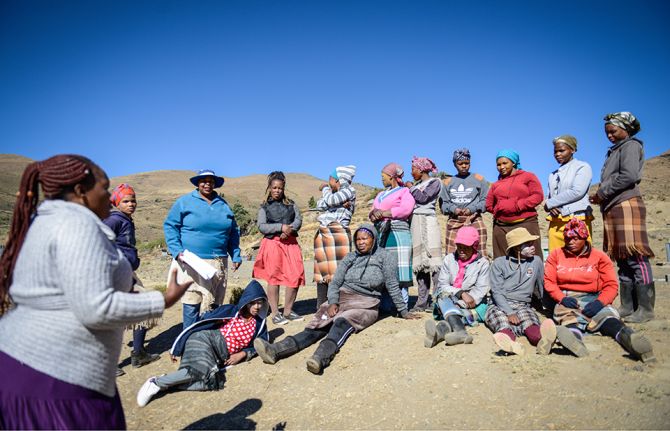
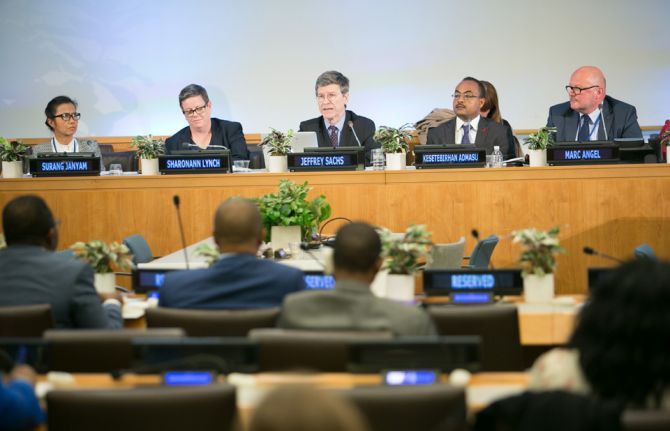
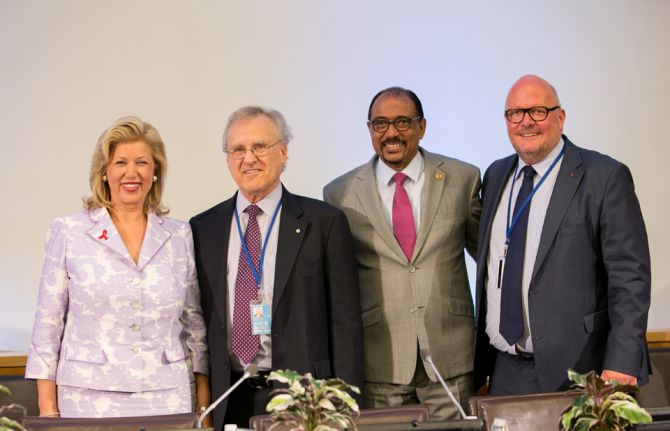
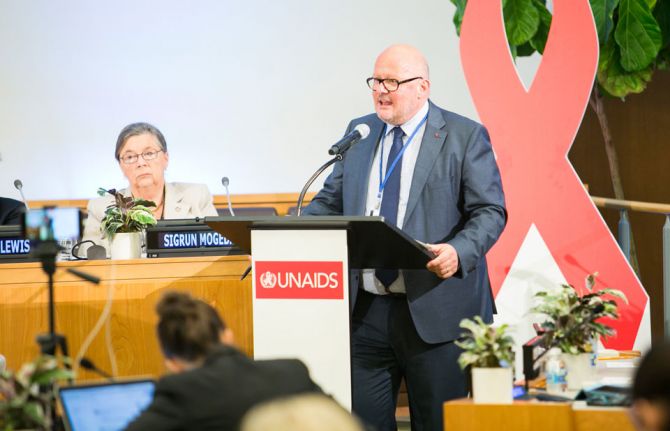
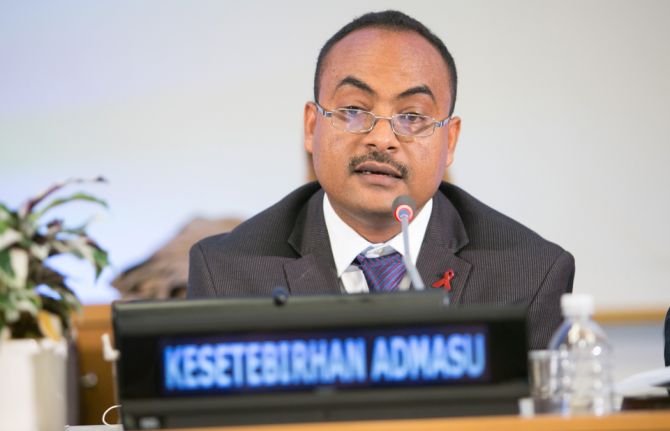
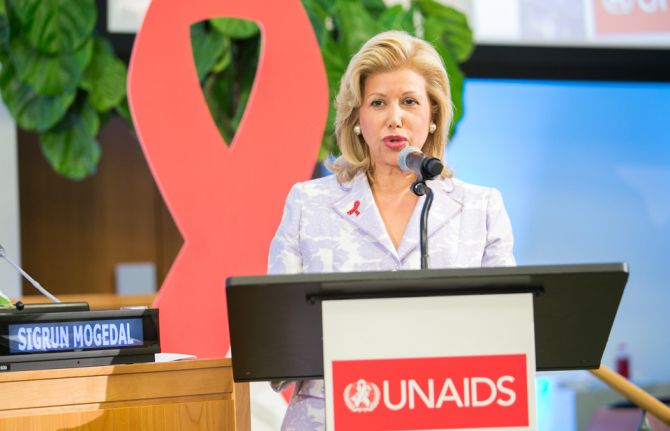
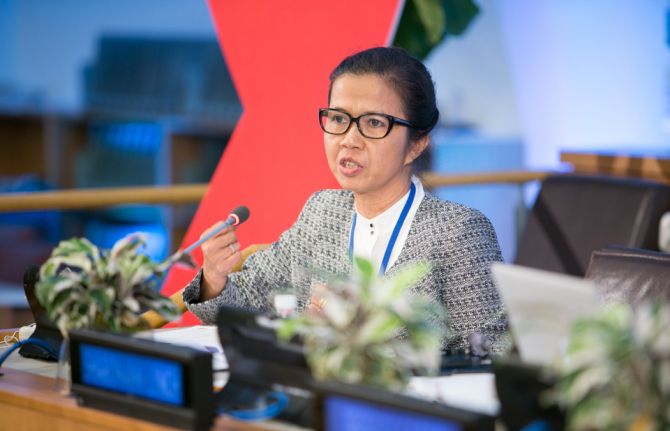
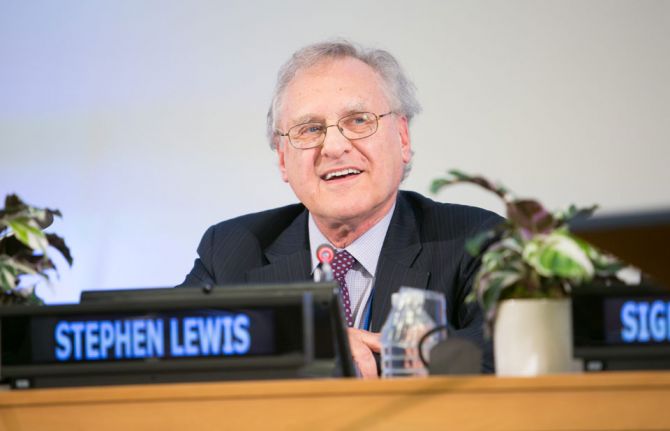
Update
Urgent need to strengthen community health systems to achieve the 90–90–90 treatment target
10 June 2016
10 June 2016 10 June 2016The 90–90–90 treatment target cannot be reached without a substantially greater involvement of a well-resourced and well-trained community health workforce, experts told a side event at the United Nations General Assembly High-Level Meeting on Ending AIDS, taking place in New York, United States of America, from 8 to 10 June.
Speakers at the side event, held on 9 June and entitled “90–90–90 and human resources for health,” emphasized that the 90–90–90 treatment target offers a road map towards the ultimate goal of ending the AIDS epidemic by 2030. However, shortages in human resources for health pose a grave threat to hopes for ending the epidemic as a public health threat.
Community health workers represent a potentially transformative mechanism for closing health workforce gaps and accelerating progress in scaling up HIV treatment and improving treatment outcomes. Kesetebirhan Admasu, Minister of Health of Ethiopia, described how the country’s health extension worker programme has substantially improved health-care access and helped make health services more sensitive to the needs of communities.
Community health systems are especially critical for ensuring access to essential health services among people who face challenges in accessing mainstream services, including members of key populations. Surang Janyam, of the Service Workers In Group in Thailand, explained how trained community health workers have expanded access to HIV services among sex workers, men who have sex with men and transgender people in Thailand and increased community ownership of the AIDS response.
Sigrun Mogedal, of the Global Health Workforce Alliance, said that the AIDS response should partner and coordinate closely with the many efforts already being undertaken to strengthen the health workforce. In 2016, the World Health Assembly approved a new global strategy for the health workforce, prioritizing the strengthening of community health systems. The Earth Institute of Columbia University is spearheading a global partnership to mobilize 1 million community health workers in Africa, and countries such as Ghana have taken important steps to train and deploy new cadres of community health workers.
However, the lack of growth in international HIV assistance potentially jeopardizes the world’s capacity to build a strong and durable health workforce to achieve the 90–90–90 treatment target, speakers in the session emphasized. Jeffrey Sachs, Director of the Earth Institute, and Stephen Lewis, Co-Founder of AIDS-Free World, called for urgent action to mobilize new resources for AIDS and to ensure that sufficient new funding is channelled to community systems.
Quotes
“We need to generate broad global commitment and action to ensure sufficient human resources to achieve 90–90–90.”
By moving from service client to service provider, communities can provide testing, antiretroviral therapy and pre-exposure prophylaxis for our members.”
“We need to consider task-shifting to patient groups and to patients themselves. These models are now being brought to scale in some provinces. We need more patient autonomy and more self-administered therapy. Treatment needs to fit into people’s lives, not the other way around.”
“Reaching 90–90–90 is absolutely vital and indispensable for turning the tide against the epidemic.”
“We know technically how to end the AIDS epidemic. 90–90–90 is especially important because it mobilizes our efforts not only for the decency and humanity of keeping people alive but also to end transmission of this disease and to bring this epidemic to a full close.”
“The vital role of community health workers has to be maximized if we hope to reach 90–90–90. The AIDS movement shows us what can be achieved through communities. We must work hand in hand with communities and provide them with the human and financial resources they need to fulfil their mission.”
“I appeal for the mobilization of all the people and resources and the implementation of large-scale resources to end paediatric AIDS. I ask you to give a voice to those who have no voice.”
"Ten to 15 years ago human resources for health was not on the table. Today, we have come a long way to create an agenda for the health workforce. As we now talk about what we can do in the AIDS movement to reach that extra step to those who are denied services, we have partners . . . We should not go alone.”


